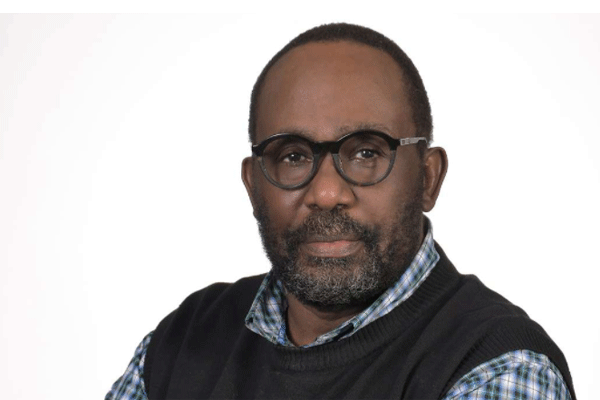Prime
Kenya vs Uganda: Anatomy of election rigging

Author: Charles Onyango Obbo. PHOTO/FILE
What you need to know:
In Uganda, on the other hand, we don’t steal the margin. We steal the whole election...
Kenyans went to the polls yesterday, August 9, and it won’t be long before a winner is declared. Then the games will begin. Some violence, maybe. Maybe not this time. A court challenge of the result? Most definitely. In 2017 in a shocker, Kenya’s Supreme Court overturned the election of President Uhuru Kenyatta, following a petition by his rival, veteran opposition leader and former Prime Minister Raila Odinga.
This, then, is an excellent time to compare Kenya’s and Uganda’s elections across seven areas.
1. Perhaps we should begin with how malleable Kenyan politics, particularly electoral alliances, are. Though they were bitter rivals in 2013 and 2017, President Kenyatta, who is leaving office at the end of his two terms, this time is backing Raila, and they have formed an electoral alliance Azimio la Umoja, against his deputy William Ruto.
It is hard to conjure up a perfect Ugandan parallel. Perhaps it would be the equivalent in 2026 President Yoweri Museveni giving up his bid for a ninth term, and backing his 2021 rival, National Unity Party’s Robert Kyagulanyi (aka Bobi Wine), against his son, Land Forces Commander Lt Gen Muhoozi Kainerugaba, if he throws his hat in the presidential ring. Not impossible, but River Nile would first have to dry up before it happens.
2. As Kenyans went to the polls, no opposition candidate or supporters had been beaten, jailed, or killed. Election-related violence and repression in Uganda happen before, during, and after the election. In Kenya, it happens after. In 2007/2008, in the worst such violence in the country’s history, nearly 1,500 people were killed and 600,000 displaced. The elections of 2013 and 2017 were largely peaceful. There are elections for County Governors (47), Senators (47) directly elected, 16 women nominated by the political parties according to their relative strength in the Senate elections, two members to represent the youth, and two members to represent persons with disabilities), MPs (349), and Members of the County Assemblies – MCAs - (1,470).
There is a view that because you have so many down ballots, and for many, it’s the governorship that matters more than the presidency, violence over the presidency has been muted. That view will be tested shortly.
3. The big question is whether there is less vote rigging in Kenya than in Uganda. The easy answer is that both have vote theft, but there are major differences in how it is done and why. One key difference is the clout of non-state parties and competitors. Kenyan opposition parties and leaders can be so strong in some parts of the country that even the full might of the state cannot steamroll there during elections.
Therefore, Kenyan opposition parties and leaders have the possibility to rig the vote in their strongholds, though less so than in the areas where the incumbent president and ruling are entrenched. So, first, Kenya is nearly an equal rigging opportunity country. Uganda is not.
That means that in Kenya, they steal the “winning margin”. They don’t steal the whole election. For the system to steal the election for you, you have to be within “striking distance”, to have one hand on the trophy. The rigging helps you to get your second on the trophy; therefore, you need to be close. This dynamic has led to a situation some estimates put the vote stolen in Kenya at between 2.5 percent and 5 percent.
In Uganda, on the other hand, we don’t steal the margin. We steal the whole election; thus, the rigging percentage ranges from 25 percent to 50 percent.
4. In this election, it is free for all when it comes to tallying results, with the media and civil society enabled by the Independent Electoral and Boundaries Commission (IEBC) to tap into the results feed as they come in and to set up their alternatives. Only the IEBC results, though, are official. Try that in Uganda at your peril.
5. Kenya is the biggest East African economy and has its most expensive elections. In 2017, some estimates put the money spent by candidates - from the presidential to the MCAs - at close to $850 million. That is almost equivalent to Burundi’s national budget in 2021. That, of course, has serious corruption-related implications for cost recovery for those candidates who win.
6. More than 16,000 candidates are standing in the Tuesday election. Over 7,000 of them are independents, the largest cohort. This is a striking similarity with Uganda, where the independents have been the largest single bloc going into the last two elections. Something is going on there.
7. And, then, this. In Uganda, the president doesn’t have to worry that the Supreme Court will rule on a petition against his victory. In Kenya, all bets are off. Courts have become the Kenyan president’s worst nightmare.
Mr Onyango-Obbo is a journalist,
writer and curator of the “Wall of Great Africans”. Twitter@cobbo3





